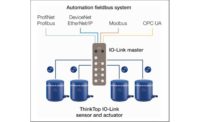HACCP validation - The time to speak up is now
On March 19, 2010, FSIS issued a Draft Guidance: HACCP Systems Validation. This draft document outlines procedures plants can use to validate their HACCP systems. It is essentially a re-interpretation of the HACCP regulation published in 1996.
Since the inception of the HACCP regulation HACCP systems have been validated. Frequently, this validation has been accomplished by supporting decisions on selection of CCPs and Critical Limits with scientific references. Since inception, HACCP systems have been routinely reviewed by on-site inspection staff and during recent years have received extensive reviews through Food Safety Assessments. This currently provides significant oversight of a plant’s HACCP systems.
In the March 19, 2010, Draft Guidance: HACCP Systems Validation FSIS indicates that the use of scientific references to validate is not adequate. They indicate that plants must conduct in-plant testing to confirm that the parameters outlined in the reference have the intended effect in their facility. This validation is required even of FSIS documents such as Appendix A, Compliance Guidelines for Meeting Performance Standards for Certain Meat and Poultry Products, and Appendix B, Compliance Guidelines for Cooling Heat-Treated Meat and Poultry Products (Stabilization).
Appendix A and Appendix B can no longer be considered “safe harbors.” FSIS is indicating that you should conduct testing of your products to confirm that in products you produce that lethality is achieved as outlined in Appendix A.
FSIS also indicates that more than CCPs must be validated. It feels the effectiveness of prerequisite programs must also be validated. Most likely validation of a CCP or a prerequisite program would be accomplished through extensive microbial testing. The Draft Guidance document indicates FSIS estimates it may take 78 microbial tests to validate a beef slaughter plan and 52 microbial tests to validate a ready-to-eat processed product. In addition to conducting tests to validate their plans, plants will also need to continue routine testing to confirm on-going verification.
The Draft Guidance document indicates that validation should be conducted for each slaughter process and for processed products that are “substantially different” from other processed products.
This proposed validation procedure puts a very heavy burden on plants that process multiple species of livestock and produce a wide variety of products. Most small and very small plants fit that description. It has been estimated that it could cost a plant $100,000 or more to validate all of their HACCP systems and perhaps $30,000 or more per year for on-going verification.
There is considerable information on the AAMP Web site (www.aamp.com) concerning validation. It is available to both AAMP members and the public. Go to the AAMP page and click on the first Hot Topic (Validation of HACCP System Information).
Processors and other interested parties have until April 19, 2010, to comment on this Draft Guidance document (an extension has been requested for this comment period but as of this writing it has not been granted). FSIS has made available three documents on the validation of HACCP systems on its Web site: http://www.fsis.usda.gov/PDF/HACCP_Validation_Ltrs.pdf
Submit your comments to the email address DraftValidationGuideComments@fsis.usda.gov, or to the Docket Clerk, USDA, FSIS, Room 2-2127, 5601 Sunnyside Avenue, Beltsville, MD 20705.
It is also recommended that you express your views to your senators and representatives in Washington, D.C. This is serious business, and it is extremely important that meat processors express their opinions now.
Remember: If it isn’t broke, don’t fix it!
Looking for a reprint of this article?
From high-res PDFs to custom plaques, order your copy today!






